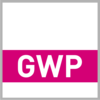Light microscopy
With the light microscopy mostly metallographic grindings are recorded. For the evaluation of micro structures 3 reflected-light microscopes of the companies Nikon and Leica are available. It is also possible for us to capture images under polarized light and in the interference visibility according to Nomarski next to the common bright and dark field illumination. These illumination possibilities are used to evaluate the structures of steels, NE-alloys as well as CFRP. For the survey of plastics and e.g. the evaluation of the polymerization state we use transmitted-light microscopes. With an automatic scanning desk and the associated automatic picture recordings, recordings of grinding sizes up to 100 x 100 mm can be created. This simplifies the phase determination and the pore evaluation for the whole grinding profile.
Light microscopy on unetched microsections
Unetched microsections provide much information about the material, the manufacturing process and the material characteristics. Graphite formation, nonmetallic inclusions, coatings, porosity or the crack progress in the case damage analysis can be evaluated, too.
Dark field illumination
When it comes to contrasting with dark field, the direct light emitted by oblique illumination passes the ocular. Deflected light only encounters the ocular, allowing a completely different point of view. In materials engineering, we use the dark field to contrast phases and to check the quality of the preparation of metallographic sections.
Differential interference contrast
This optical contrasting uses the differences of wavelengths to visualise the slightest differences in height. With the help of the Nomarski prism and polarizing filters, you can generate an interference of partial beams having different path lengths. After a relief polish, coating systems can be visualized and textures can be colorised.
Light microscopy on etched metallographic sections
Different metallographic etching methods reveal the diversity of material microstructures.
With extensive experience in sample preparation, metallography and materials science is it possible to interpret the properties of materials. For a stainless steel, for example we can evaluate the primary microstructures like segrations or secondary microstructures including austenite and delta ferrit content.
Transmitted light microscopy at thin sections
During the metallographic examinations of polymer materials and fiber-reinforced plastics thin sections are used. Microtom cuts or metallographic thin section samples are translucent and can be regarded in the polarized transmitted light. Thus the structural structure will be able visibly and it impurities, be examined fusion fronts, welding structures, grain boundaries and spherulite.
Standards
DIN EN ISO 643 Steel - Microphotoraphoretic determination of identifiable grain size
ASTM E 112 Determination of average grain size
DIN EN ISO 3887 Steel - Determination of decarburisation depth
DIN EN ISO 945-1 Microstructure of cast iron - Part 1: Graphite classification by visual evaluation
DIN EN 10247 Metallographic testing of the content of non-metallic inclusions in steels with image series
SEP 1572 Microscopic testing of free-cutting steels for sulfidic non-metallic inclusions with image series
ASTM E45 Guidelines for the quantitative determination of non-metallic inclusions in steel SEP 1520 Microscopic testing of carbide formation in steels with image series SEP 1615 Microscopic and macroscopic testing of high-speed steels for their carbide distribution with image series
DIN EN ISO 1463 Metallic and oxide coatings - Coating thickness measurement
![[Translate to English:] Lichtmikroskopie an metallographischen Schliffen [Translate to English:] Lichtmikroskopie an metallographischen Schliffen](/fileadmin/img/1-XXX_LabS/Lichtmikroskopie_an_metallographischen_Schliffen.jpg)
![[Translate to English:] Lichtmikroskopie Auflicht Mikroskop [Translate to English:] Lichtmikroskopie Auflicht Mikroskop](/fileadmin/img/1-XXX_LabS/Lichtmikroskopie_Auflicht_Mikroskop.jpg)
![[Translate to English:] Poren in Al-Druckguss [Translate to English:] Poren in Al-Druckguss](/fileadmin/img/1-XXX_LabS/Lichtmikroskopie_Poren_in_Al-Druckguss.jpg)
![[Translate to English:] Rissverlauf im ungeätzten Zustand [Translate to English:] Rissverlauf im ungeätzten Zustand](/fileadmin/img/1-XXX_LabS/Lichtmikroskopie_Rissverlauf_im_ungeaetzten_Zustand.jpg)
![[Translate to English:] Cu Werkstoff im DF Cu₂O wird leuchtend [Translate to English:] Cu Werkstoff im DF Cu₂O wird leuchtend](/fileadmin/img/1-XXX_LabS/Lichtmikroskopie_Cu-Werkstoff_im_DF_Cu2O_wird_leuchtend_kontrastiert.jpg)
![[Translate to English:] Cu Werkstoff im Hellfeld [Translate to English:] Cu Werkstoff im Hellfeld](/fileadmin/img/1-XXX_LabS/Lichtmikroskopie_Cu-Werkstoff_im_Hellfeld.jpg)
![[Translate to English:] Eutektisches Gefüge im DIC-Kontrast [Translate to English:] Eutektisches Gefüge im DIC-Kontrast](/fileadmin/img/1-XXX_LabS/Lichtmikroskopie_Eutektisches_Gefuege_im_DIC-Kontrast.jpg)
![[Translate to English:] Rissbewertung an Zn-Diffusionsschicht im DIC [Translate to English:] Rissbewertung an Zn-Diffusionsschicht im DIC](/fileadmin/img/1-XXX_LabS/Lichtmikroskopie_Rissbewertung_an_Zn-Diffusionsschicht_im_DIC.jpg)
![[Translate to English:] Austenitischer Edelstahl mit Deltaferrit [Translate to English:] Austenitischer Edelstahl mit Deltaferrit](/fileadmin/img/1-XXX_LabS/Lichtmikroskopie_Austenitischer_Edelstahl_mit_Deltaferrit.jpg)
![[Translate to English:] Einphasiges ferritisches Blech [Translate to English:] Einphasiges ferritisches Blech](/fileadmin/img/1-XXX_LabS/Lichtmikroskopie_Einphasiges_ferritisches_Blech.jpg)
![[Translate to English:] Mikrotomschnitt Schweissnahtgefüge [Translate to English:] Mikrotomschnitt Schweissnahtgefüge](/fileadmin/img/1-XXX_LabS/Mikrotomschnitt-Schweissnahtgefuege.jpg)
![[Translate to English:] Mikrotomschnitt Ultraschallschweissnaht [Translate to English:] Mikrotomschnitt Ultraschallschweissnaht](/fileadmin/img/1-XXX_LabS/Mikrotomschnitt-Ultraschallschweissnaht.jpg)






